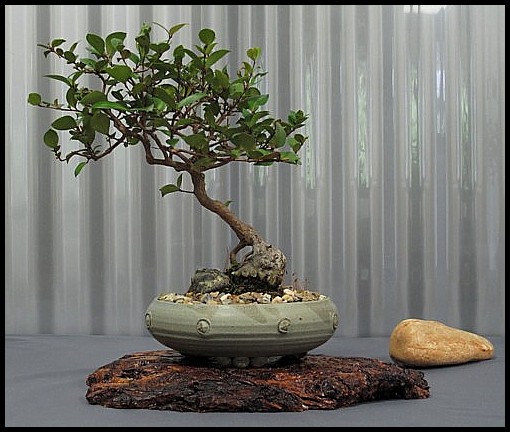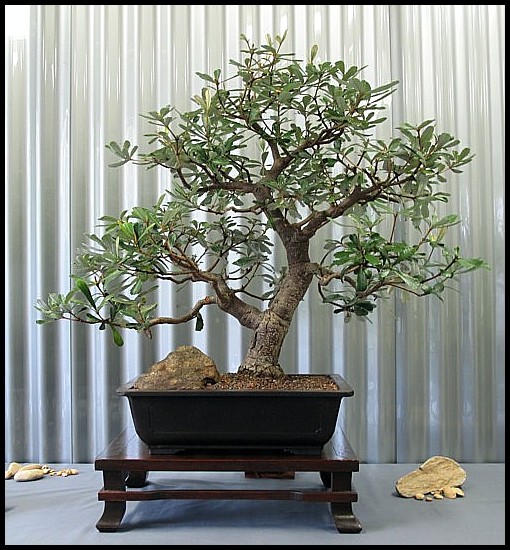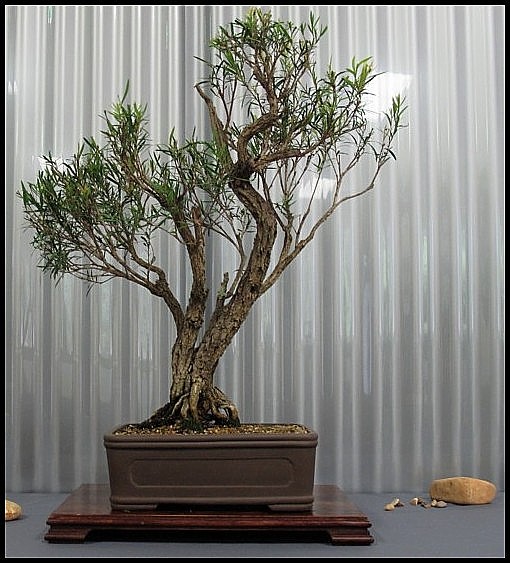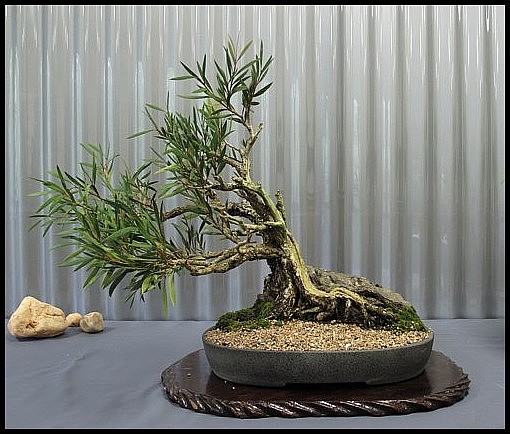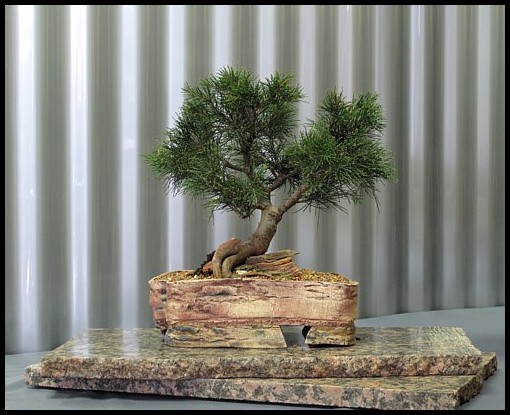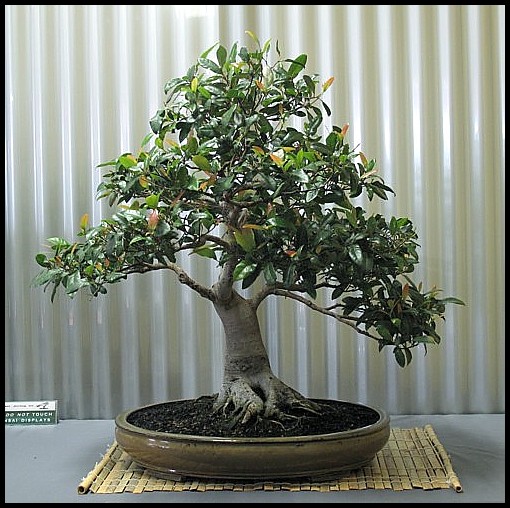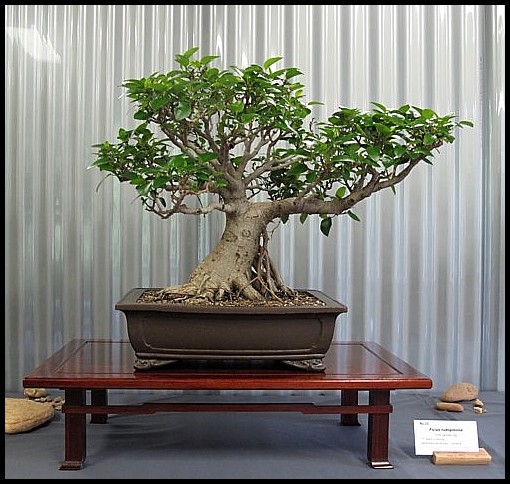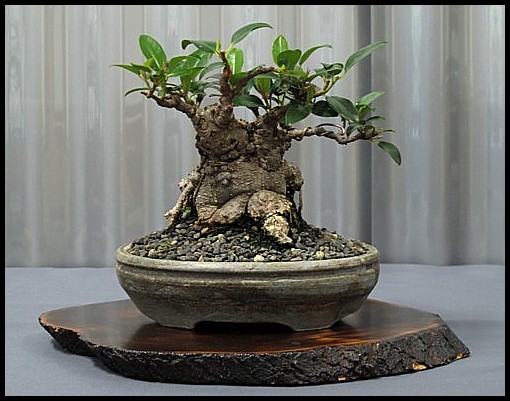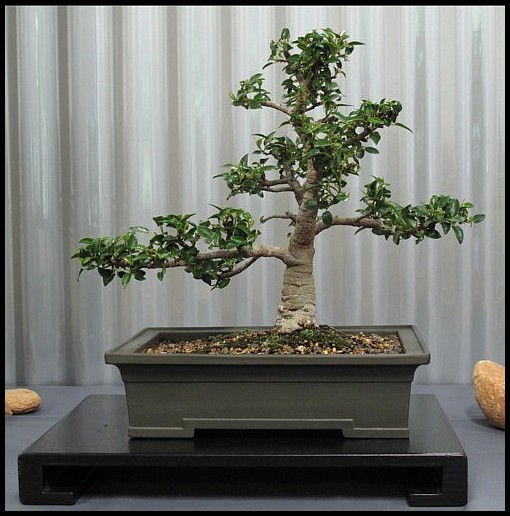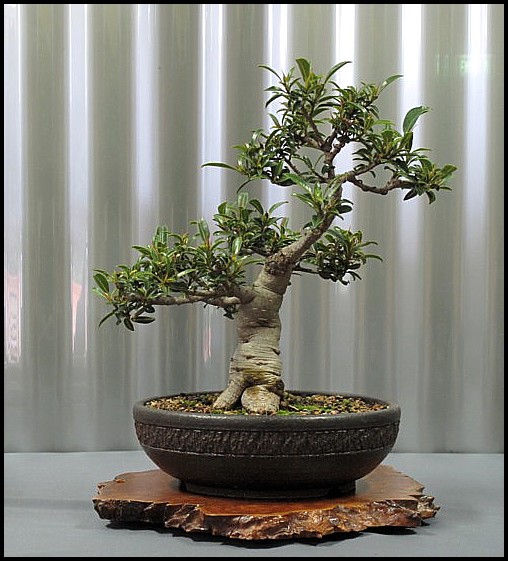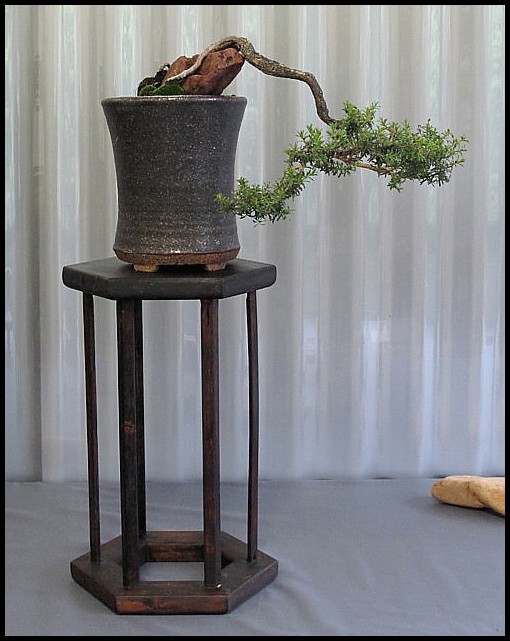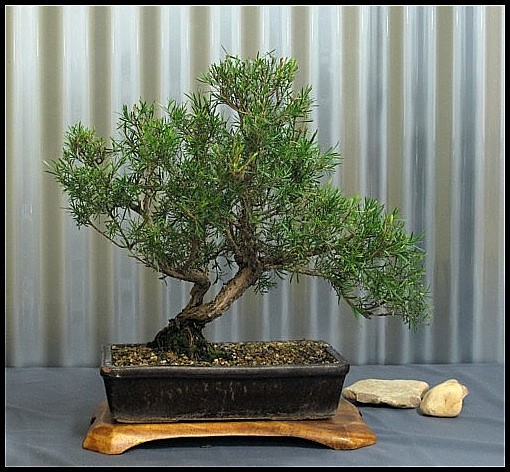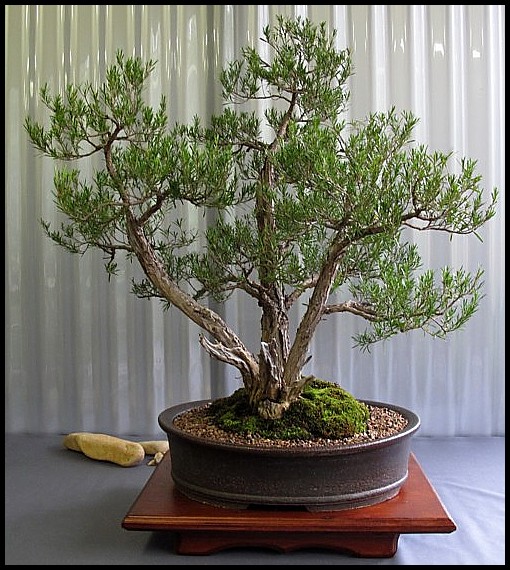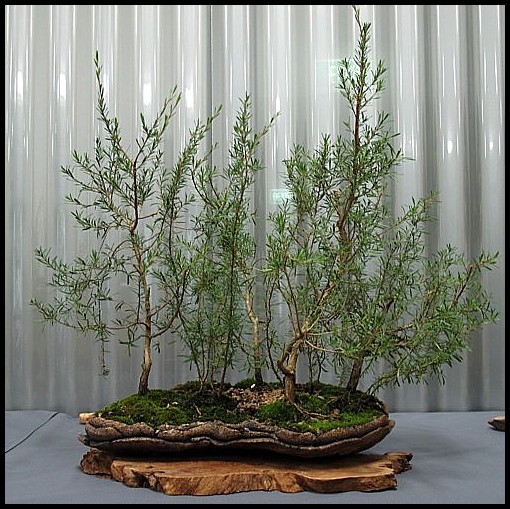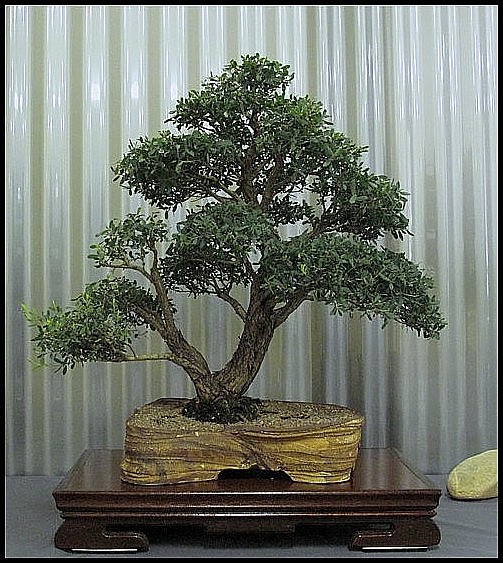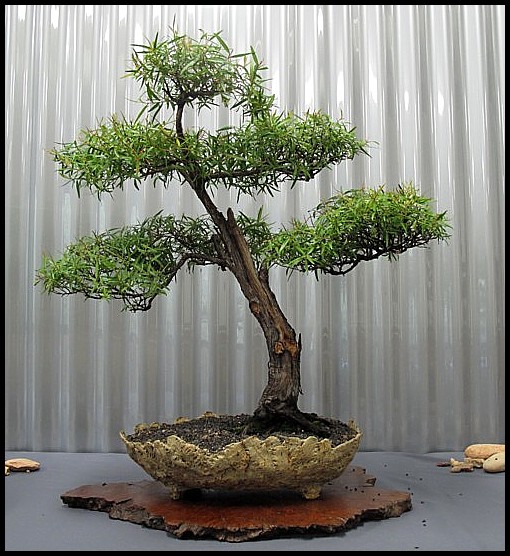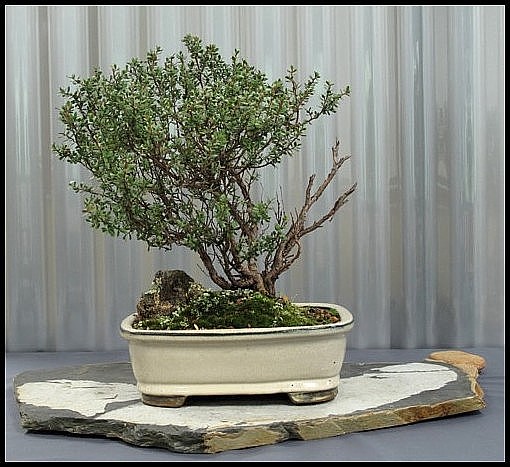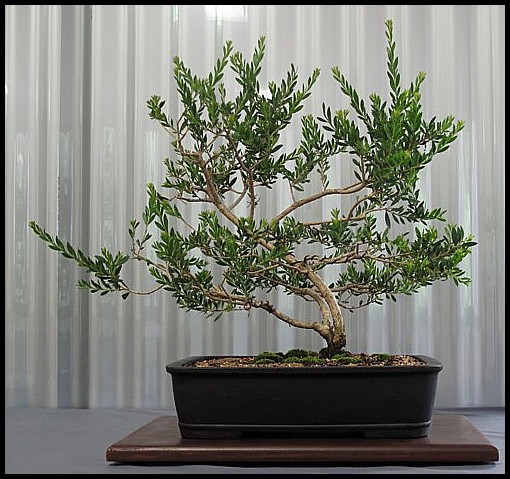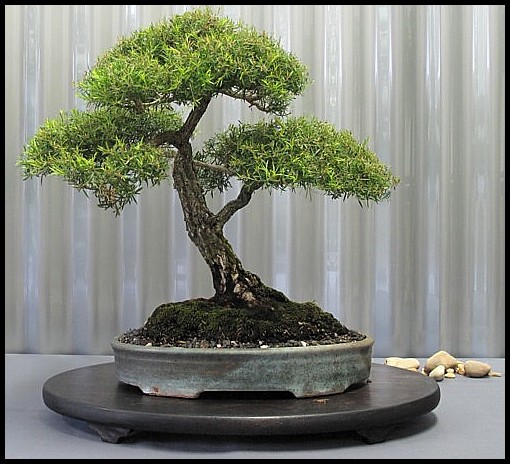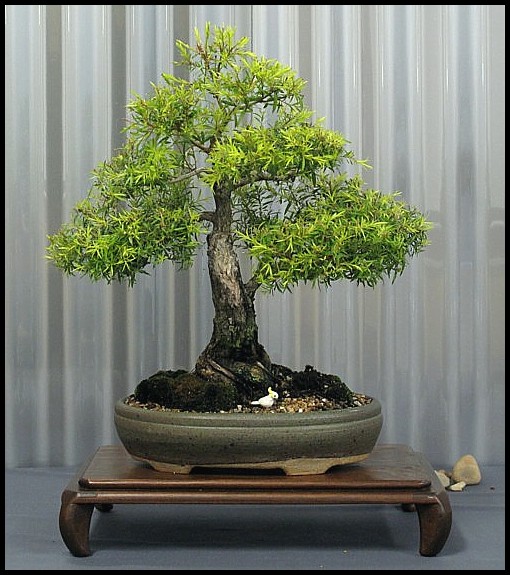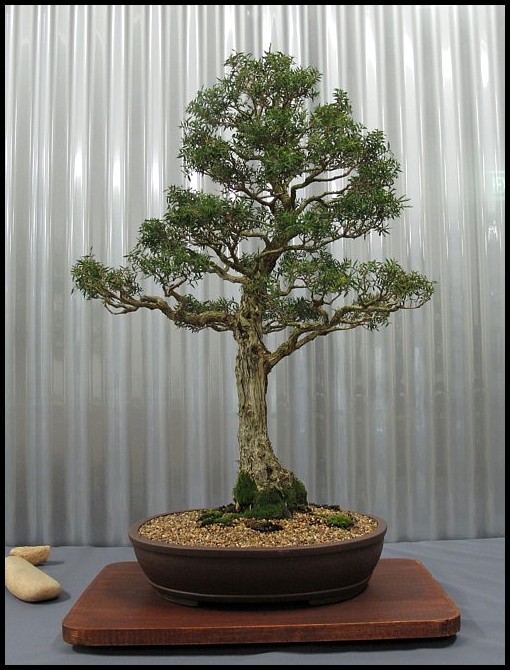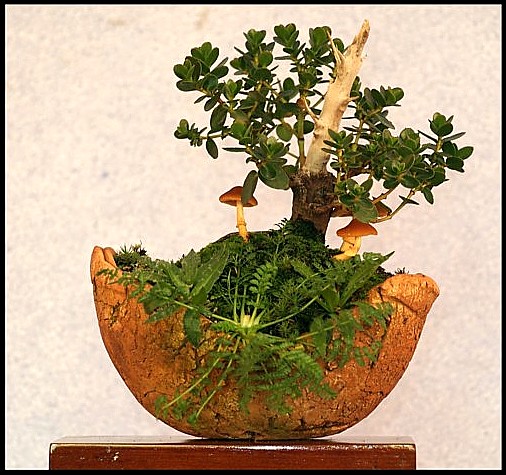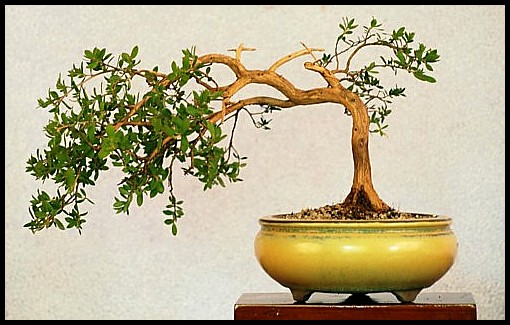Australian Native Plants as Bonsai
Catalogue Notes from the Canberra Bonsai Society's
March 2011
Australian Plants as Bonsai Exhibition
held at the Australian National Botanic Gardens
Click on photo for larger view
(and click on "back" button on large-view photo to return to this page)
Plant Species in this Exhibition |
|
Acacia howittii (Sticky Wattle) Backhousia myrtifolia (Grey Myrtle or Ironwood) Baeckea linifolia (Weeping Baeckea) Banksia 'Birthday Candles' (Cultivar of B. Spinulosa) Banksia ericifolia (Coast Banksia) Banksia marginata (Silver Banksia) Callicoma serratifolia (Black Wattle) Callistemon sp. (Bottlebrush) Callistemon sieberi (River Bottlebrush) |
Kunzea ambigua |
Leptospermum laevigatum Melaleuca sp Polystichum proliferum
|
|
|
|
|
|
|
|
Photographs by members of the Canberra Bonsai Society

